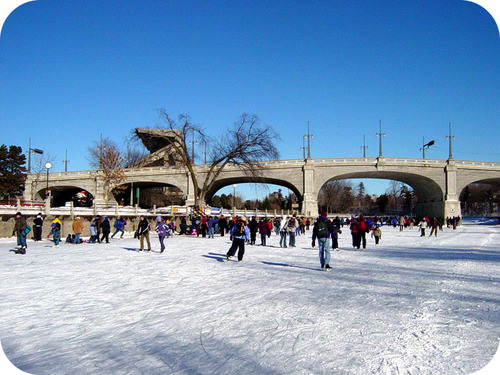15.2 冰的结构
章节大纲
-
Have you ever been ice skating?
::你去过溜冰吗?Ice is an interesting and useful material. It can be used to cool food and keep it fresh. It can provide recreation, such as ice-skating. Ice can do great damage when it freezes – roads can buckle, houses can be damaged, water pipes can burst. All this happens because of a unique property of water and ice. When water freezes, it expands in volume as ice is formed.
::冰是一种有趣和有用的材料。 它可以用来冷却食物并保持新鲜。 它可以提供娱乐,比如冰滑。 当冰冻冻结时,冰可以造成巨大的破坏 — — 道路可以扣住,房屋可以损坏,水管可以破裂。 所有这些都因为水和冰的独特特性而发生。 当水冻结时,冰块会随着冰块的形成而膨胀。Structure of Ice
::冰的结构water is a fluid . The in liquid water constantly break and reform as the water molecules tumble past one another. As water cools, its molecular motion slows and the molecules move gradually closer to one another. The density of any liquid increases as its temperature decreases. For most liquids, this continues as the liquid freezes and the solid state is denser than the liquid state. However, water behaves differently. It actually reaches its highest density at about 4°C.
::液态水是流体。 液态水中随着水分子的流过而不断破裂和改变。 随着水的冷却, 其分子运动会放慢, 分子分子会渐趋接近。 任何液体的密度会随着温度的下降而增加。 对于大多数液体来说, 液体的冷却和固体状态比液体的密度要大。 但是, 水的行为却不同。 它实际上达到了4°C的最高密度 。Density of Water and Ice Temperature (°C)
::温度(°C)Density (g/cm 3 )
::密度(克/立方厘米3)100 (liquid)
:流动)100美元
0.9584
50
0.9881
25
0.9971
10
0.9997
4
1.000
0 (liquid)
:0流动)
0.9998
0 (solid)
:固)
0.9168
Between 4°C and 0°C, the density gradually decreases as the hydrogen bonds begin to form a network characterized by a generally hexagonal structure with open spaces in the middle of the hexagons (see Figure ).
::在4°C至0°C之间,随着氢键开始形成一个以六边形中间有开放空间的一般六边形结构为特征的网络,密度逐渐下降(见图 )。The structure of liquid water (left) consists of molecules connected by short-lived hydrogen bonds because water is a fluid. In ice (right), the hydrogen bonds become permanent, resulting in an interconnected hexagonally-shaped framework of molecules. Ice is less dense than liquid water and so it floats. Ponds or lakes begin to freeze at the surface, closer to the cold air. A layer of ice forms, but does not sink as it would if water did not have this unique structure dictated by its shape, , and . If the ice were to sink as it froze, entire lakes would freeze solid. Since the ice does not sink, liquid water remains under the ice all winter long. This is important, as fish and other organisms are capable of surviving through winter. Ice is one of only a very few solids that is less dense than its liquid form.
::冰的密度小于液态水,因此它会漂浮。 池塘或湖泊开始在表面冷冻, 靠近冷空气。 冰层形式层, 但没有像它那样沉没, 如果水的形状没有这种独特的结构, 并且。 如果冰层在冰冻时沉没, 整个湖泊会冻固。 由于冰不会沉没, 液态水会整个冬天都留在冰层下。 这很重要, 因为鱼和其他生物能够在冬天存活下来。 冰是仅有的几块固体之一, 其密度比其液体形式要小。Summary
::摘要-
Ice is less dense than liquid water.
::冰比液态水密度低。 -
The intermolecular structure of ice has spaces that are not present in liquid water.
::冰的分子间隙结构含有液态水中不存在的空间。
Review
::回顾-
For most liquids, what happens to density as the temperature decreases?
::对于大多数液体来说,温度下降时密度会怎样? -
How does the density of water change at temperatures above 4°C?
::在4°C以上温度下,水的密度如何变化? -
How does the density of water change below 4°C?
::水的密度是如何变化到4°C以下的?
-
Ice is less dense than liquid water.

